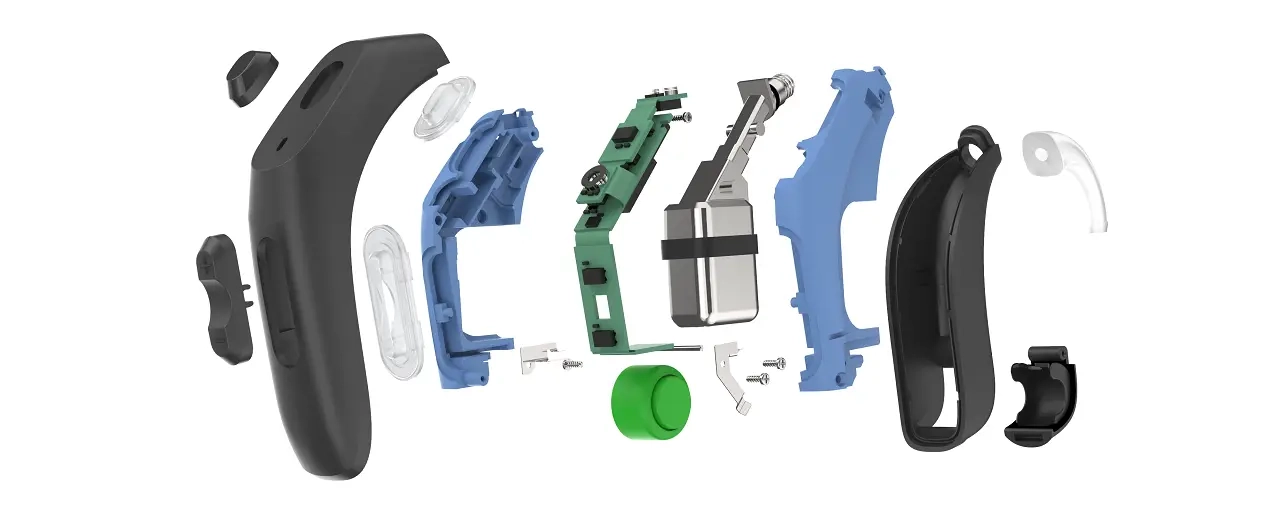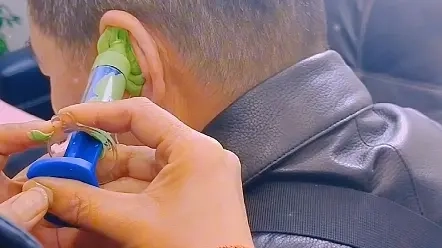
For millions of hearing-impaired people, hearing aids are their weapon to hear the world again. These small devices are a combination of cutting-edge engineering and precision handcrafting. But how do they go from concept to “smart assistant” in the ear? Let’s unravel the mystery of hearing aids from design to delivery.
Step 1: Designed for life
The starting point of every hearing aid is problem solving. Engineers work with audiologists to design devices for different needs – whether it’s sound amplification in a noisy restaurant or wireless music streaming. Today’s hearing aids are centered on compactness, comfort and connectivity, with 3D modeling software helping designers create curved shells that fit in the ear canal or behind the ear. For active people, sweat- and impact-resistant materials and water-resistant circuitry ensure that the device can handle sweat, rain or accidental drops.
Materials matter: precision and safety at the same time
Material selection has a direct impact on performance and safety. The casing is mostly made of medical-grade silicone or lightweight titanium alloy, balancing durability with comfort. Internal circuit boards are printed on ultra-thin ceramic substrates for miniaturization without sacrificing functionality. Microphones and receivers are coated with hydrophobic membranes to resist sweat or humidity. Batteries (zinc air or internal rechargeable lithium) meet stringent FDA standards for long life and safety.
Manufacturing Process: From Prototype to Mass Production
Modern manufacturing begins with rapid prototyping. 3D printers sculpt plastic molds for the housing, and robotic arms assemble the parts with micron-level precision. Circuit boards are made using “surface mount technology”, where tiny chips and resistors are laser-soldered. A breakthrough technology is chip-on-board (COB), in which a programmable processor is embedded directly into the device, with a digital core that analyzes sound in real time, filters noise, and automatically adjusts volume.

Quality testing: the test of a thousand tests
Before leaving the factory, hearing aids undergo rigorous testing. The machine simulates decades of use and repeatedly inserts and removes batteries; the soundproof room tests the device’s reproduction of whispers to the roar of jet airplanes; and the high-pressure chamber tests the waterproof performance. In the U.S., all products must pass an FDA medical device review, a process that can take months but ensures safety and effectiveness.
Personalization: A hearing experience just for you
Each person’s ear is unique. After production, an audiologist uses programming software to commission the device. The user undergoes a hearing test and the results are programmed into the hearing aid processor. High-end models even learn the user’s habits through AI to optimize settings automatically. Children or people with progressive hearing loss can adjust the “programmable” functions via a mobile app.

Green manufacturing: sustainable audiology
Environmentally friendly concepts are reshaping the manufacturing process. brands such as Starkey use recycled plastics in their housings and have introduced battery recycling programs. Solar-powered hearing aids (though still niche) reduce reliance on disposable batteries. Packaging is also becoming more environmentally friendly, with soy-based inks and biodegradable materials gradually replacing plastic.
The future: hearing aids as smart wearables
Today’s hearing aids blur the line between medical devices and technology products. Bluetooth connects to TVs and cell phones, and tinnitus-masking features ease tinnitus distress. Startups try to integrate health monitoring tools – to measure heart rate or detect falls. With AI and 5G, the hearing aids of the future will be smarter, more adaptive, and deeply integrated into everyday life.
Conclusion: Small device, big change
Behind every hearing aid is a symphony of innovative technologies: from the precision of 3D-printed molds to the algorithms that mimic natural hearing. For Americans, this technology is more than just clear sound; it’s the key to regaining independence, confidence and the joy of conversation. The next time you see someone wearing a hearing aid, remember: it’s not just the device, it’s the engineering masterpiece that reshaped lives.







